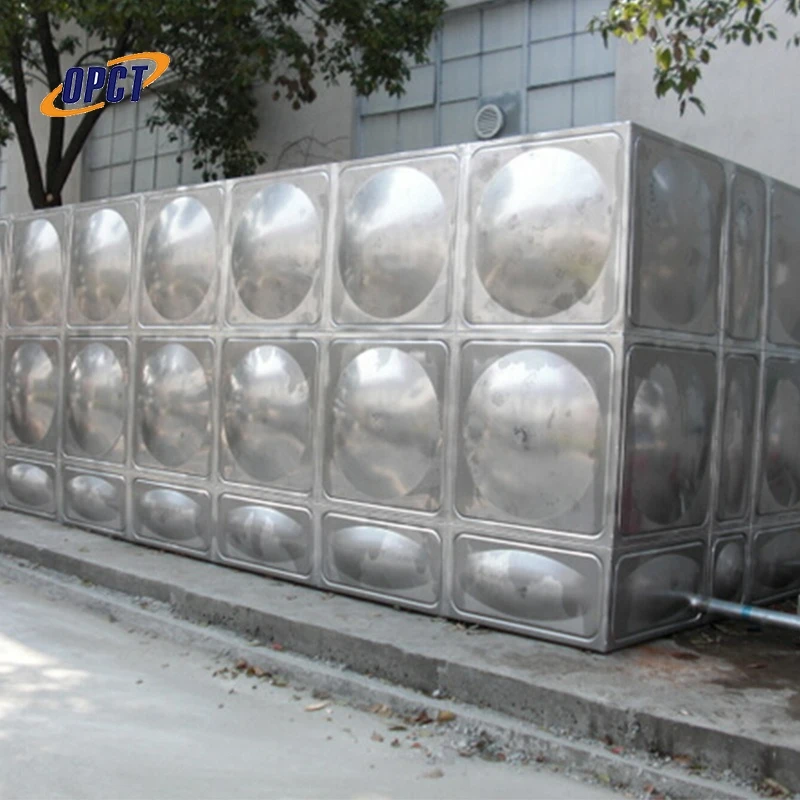In the vast landscape of industrial storage solutions, chemical tanks have emerged as pivotal components for businesses managing hazardous or sensitive materials. These tanks are not just containers; they are safeguarding systems designed with precision to handle a wide array of chemicals under varying environmental conditions. Here, we delve into the intricacies of choosing the right chemical tank, underscoring the essential qualities and materials that define superior tanks, backed by industry expertise and authoritative insights.

Selecting the right chemical tank is not merely a function of capacity; it involves a nuanced understanding of the chemicals in question. One of the first considerations is compatibility.
Chemical tanks must be constructed from materials that resist degradation and chemical reaction. Common materials used in the manufacturing of chemical tanks include high-density polyethylene (HDPE), fiberglass reinforced plastics (FRP), and steel alloys. Each of these materials brings unique benefits and is suited to certain types of chemicals.
HDPE tanks, for instance, are renowned for their strength and corrosion resistance, making them ideal for acids and other corrosive substances. They offer flexibility and durability, with the advantage of being less expensive and easier to transport than their metal counterparts. Experts in the field often recommend HDPE tanks for businesses that require lightweight and robust storage solutions with a high resistance to chemical attacks.

In contrast, fiberglass reinforced plastic tanks offer superb resistance to a wide range of chemicals and can be customized in terms of shape and size. Their lightweight nature, coupled with the robustness, provides a durable option for storing even the most volatile chemicals. FRP tanks are particularly advantageous in environments that demand high resistance to heat, as they maintain structural integrity under temperature fluctuations, which is critical in maintaining safety standards.
Steel tanks epitomize strength and longevity, commonly utilized in applications requiring extreme pressure and temperature conditions. Their high resistance to impact and wear makes them indispensable in heavy industrial situations. However, the choice of steel needs to be meticulous, often involving stainless steel or specially coated varieties to deter chemical reactions and rust. Industry leaders underscore the necessity of understanding specific attributes and treatment processes for steel to ensure safeguarding chemical properties are not compromised.
chemical tanks
The next pivotal aspect surrounding chemical tanks is capacity and configuration. Businesses need to assess their storage needs carefully, considering both current demands and future scalability. Tanks come in various configurations, including vertical, horizontal, and rectangular, each contributing to space optimization. Vertical tanks, for instance, save on floor space and are excellent for gravity dispensing. Horizontal tanks provide stability and ease of access, whereas rectangular tanks maximize capacity within confined spaces. The configuration should harmonize with the facility's spatial design and operational flow to prevent mishaps and boost efficiency.
Furthermore, the often-overlooked aspect of venting and pressure management in chemical tanks cannot be overstated. Proper venting mechanisms ensure that pressure buildup does not lead to catastrophic failures such as rupturing or leaks. Experts advocate for the integration of pressure relief systems and regular maintenance checks to preemptively address potential safety hazards. This systematic approach not only aligns with industry compliance but also builds an authoritative reputation in chemical management processes.
A critical dimension of trustworthiness in chemical tank solutions is the rigorous adherence to safety and environmental regulations. Chemical tanks must meet standards set by authoritative bodies such as the Occupational Safety and Health Administration (OSHA) and the Environmental Protection Agency (EPA). Certification from these bodies ensures that the tanks are tested for safety, environmental impact, and operational efficacy.
Lastly, the credibility of chemical tank suppliers plays an instrumental role in the decision-making process. Reputable suppliers provide extensive warranties, robust customer support, and detailed product information, reflecting confidence in their product’s quality and reliability. Engaging with suppliers who offer installation and maintenance services further reinforces operational integrity, ensuring seamless integration and longevity of the tanks.
In essence, the selection and maintenance of chemical tanks require a deep confluence of experience, technical know-how, and adherence to best practices. Businesses that excel in their use of chemical tanks often integrate comprehensive training, quality assurance protocols, and a commitment to continuous improvement, positioning themselves not only as industry leaders but as custodians of safety and environmental stewardship.




